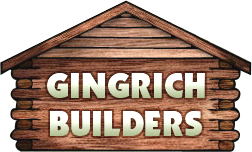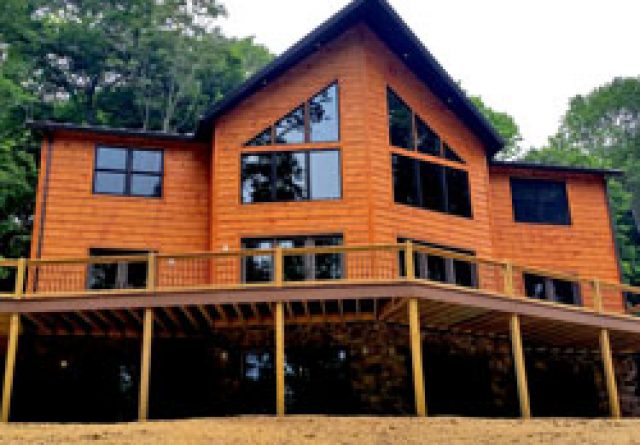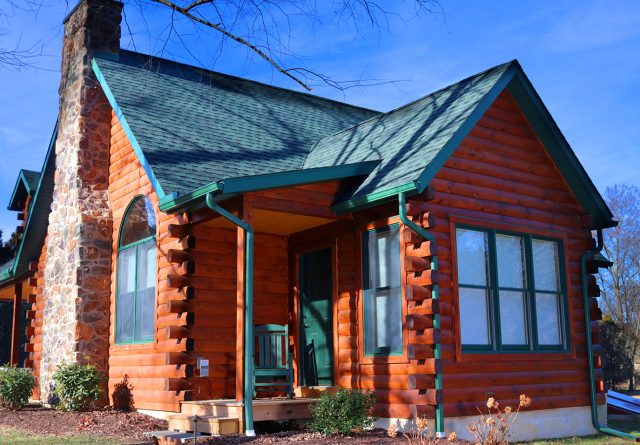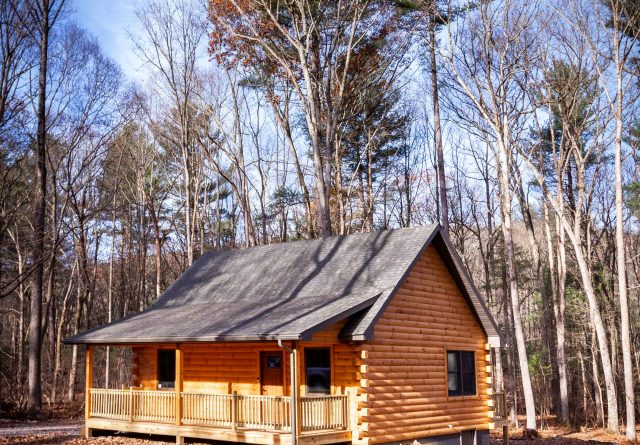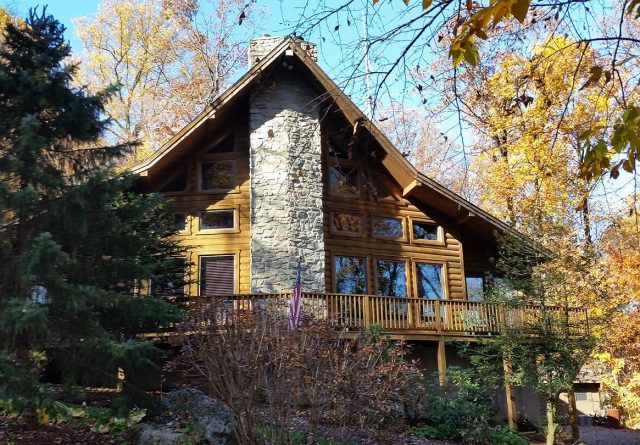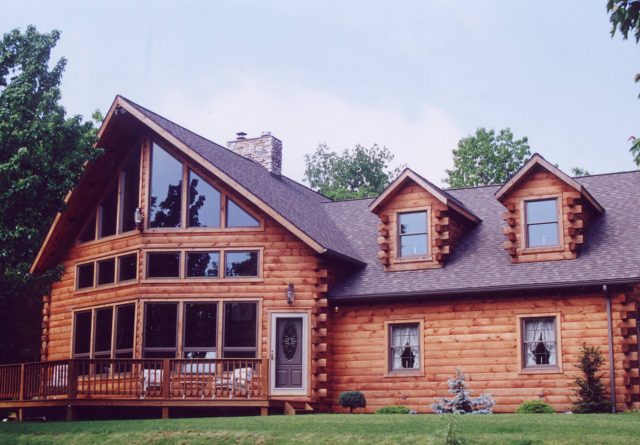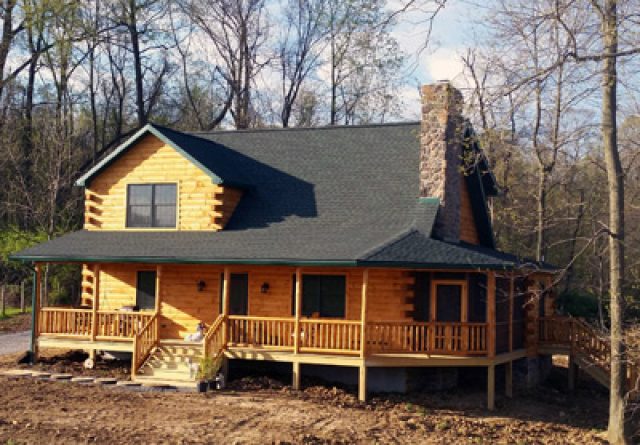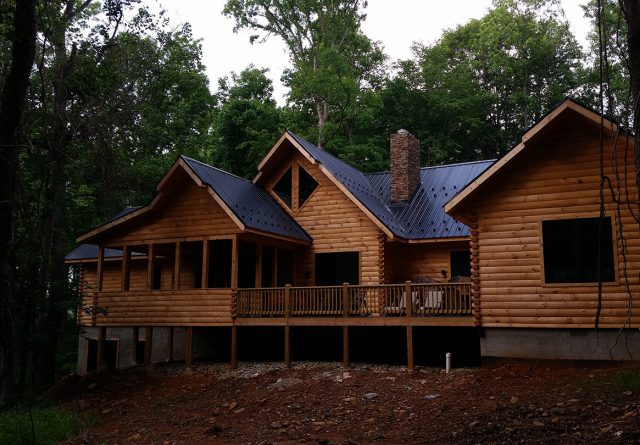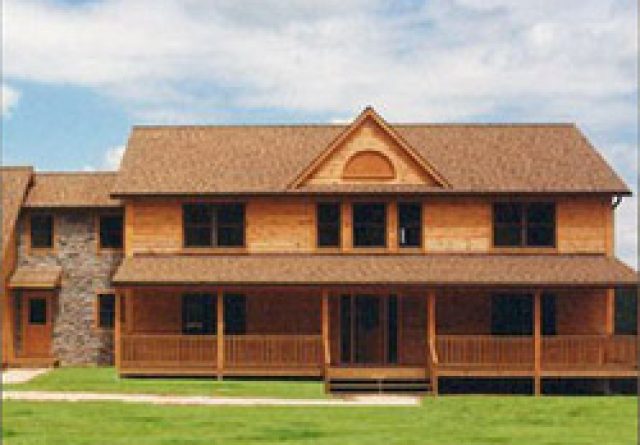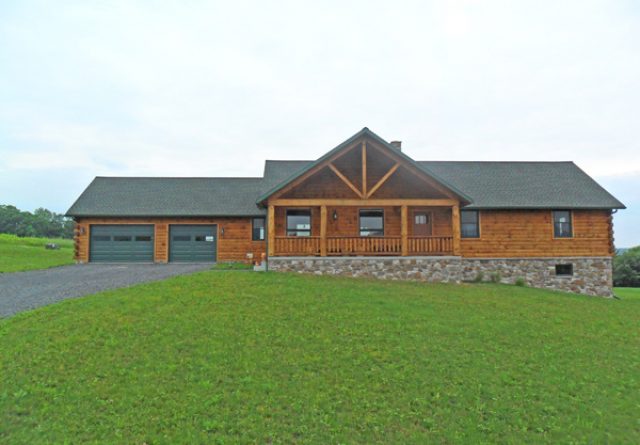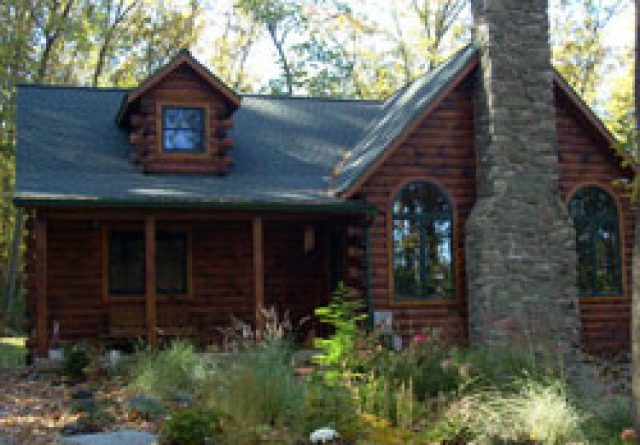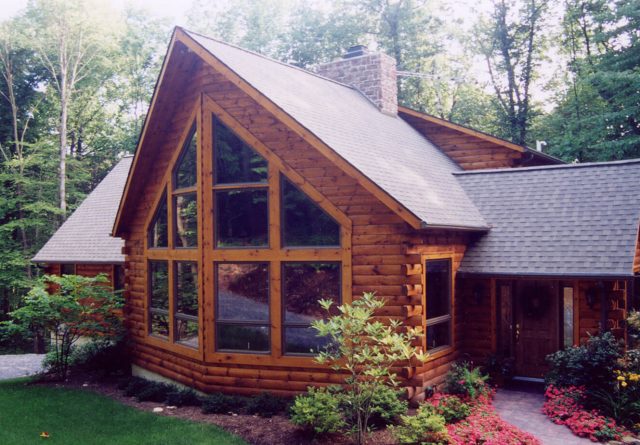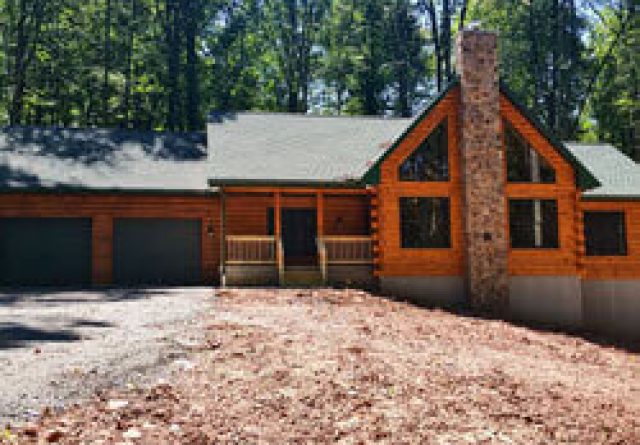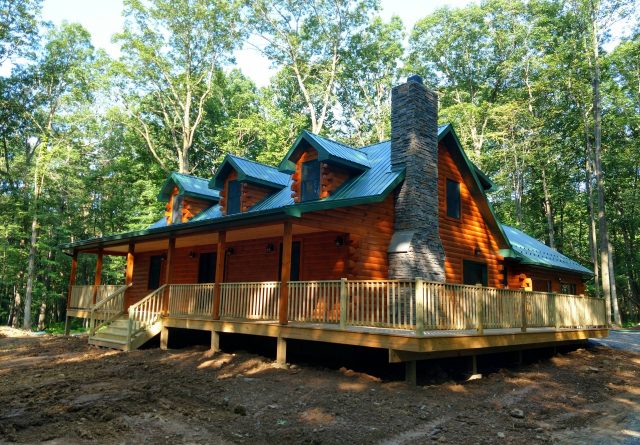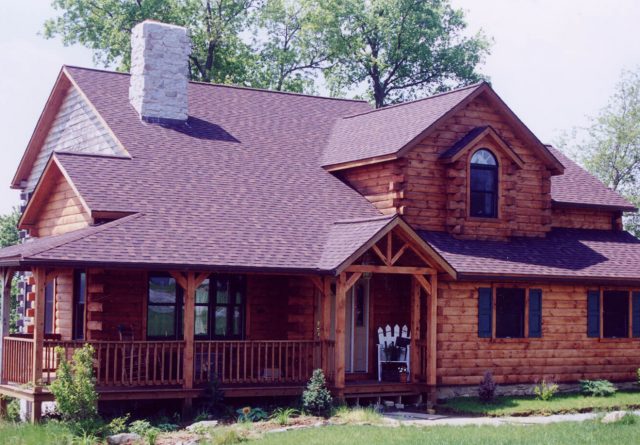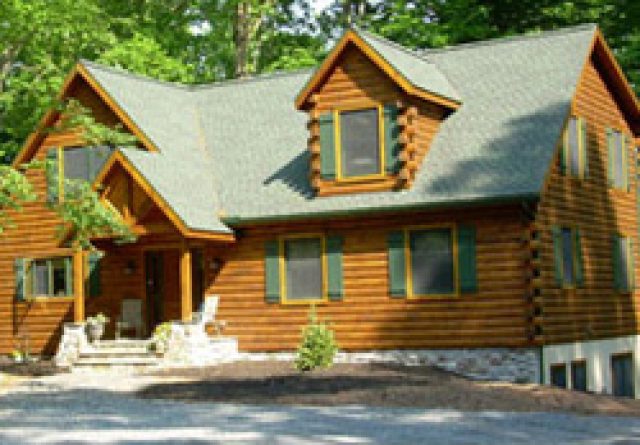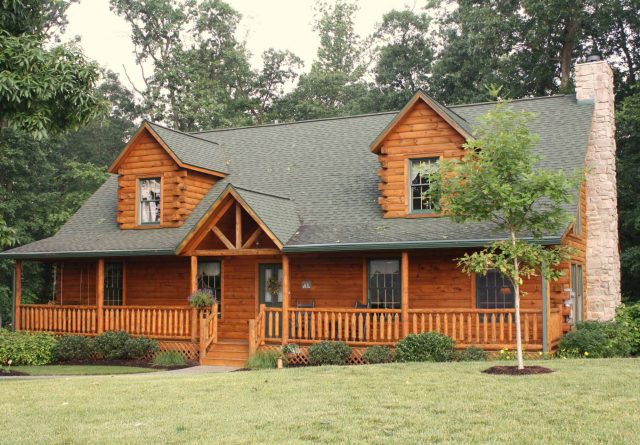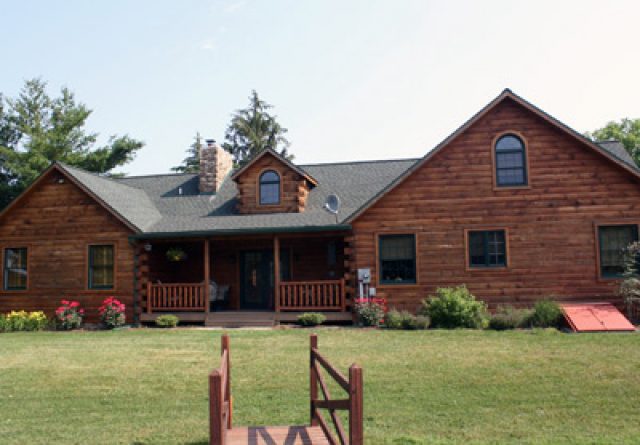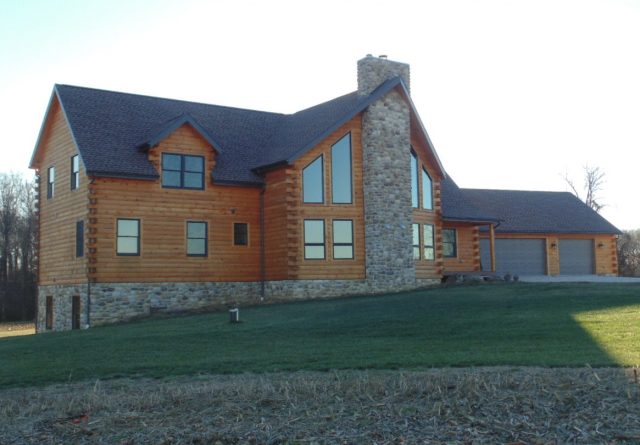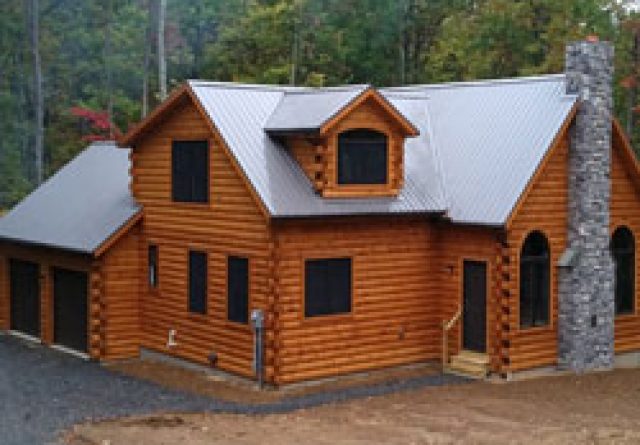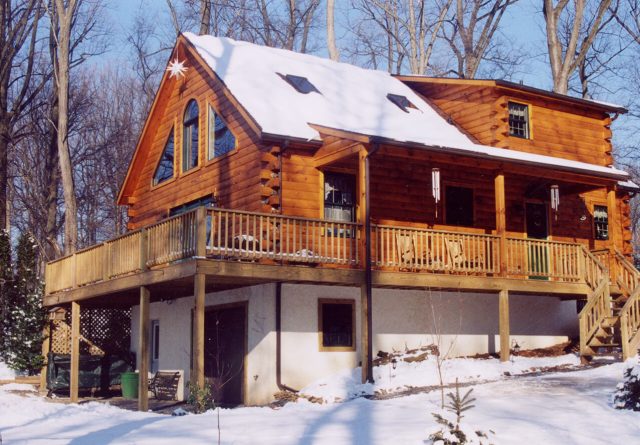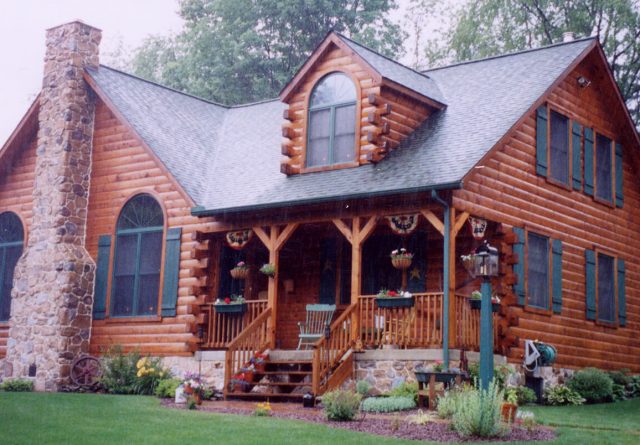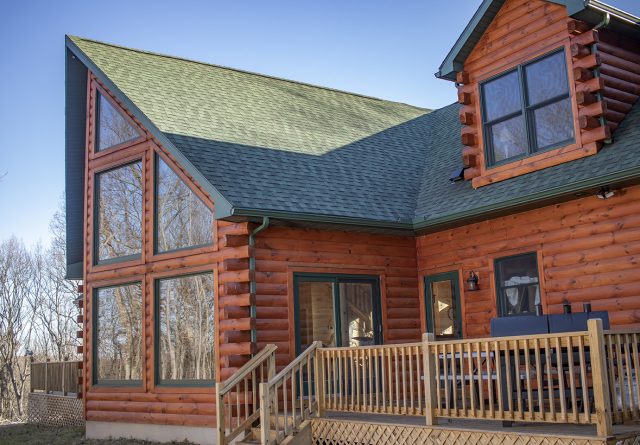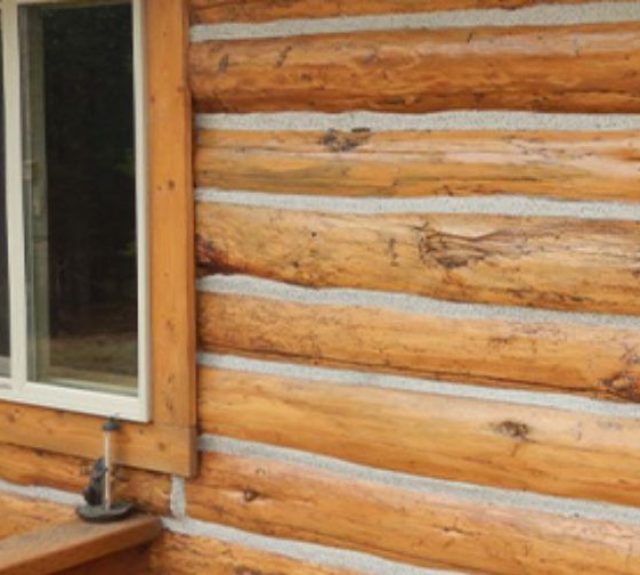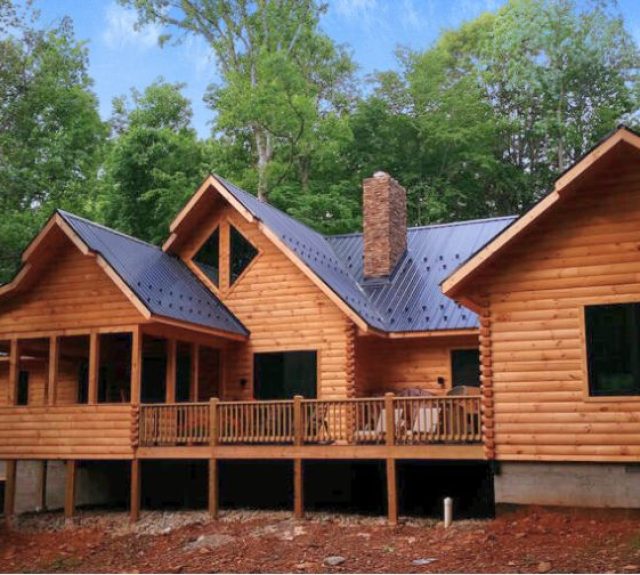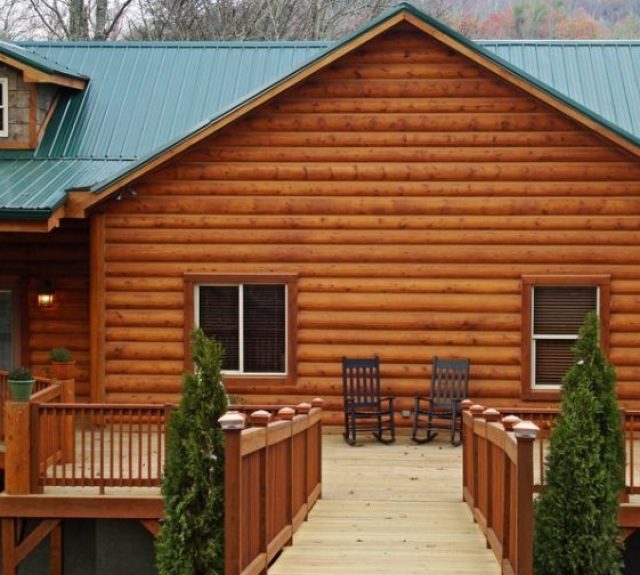Sealing a Log Home Just Like the Professionals
Log cabins stand out from the vast majority of homes in the twenty first century — which is why we love them so much. With that truly unique log exterior, there are some vastly different maintenance requirements compared to an average suburban home. Sealing a log home is crucial to keeping the color looking exceptional, while protecting the health of the wood. In today’s blog, we’re breaking down the process of sealing a log home and explaining your options for getting it done.
At Gingrich Builders, we’re a cabin builder and log home maintenance company with more than 45 years in the industry. While our crews are prepared to handle sealing your log home (whether we built it or not), we’re also happy to equip you with the information and products to handle it yourself. Learn more about sealing a log home — and stock up on the same products our experts use.
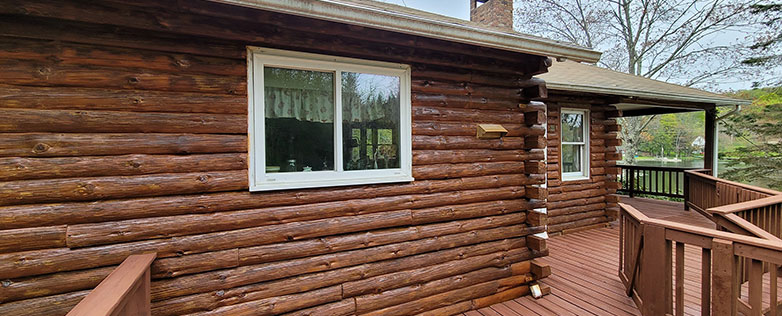
How to Seal a Log Cabin: What We Do & What to Buy
Sealing a log cabin is a fairly simple process, yet it requires careful and diligent effort to accomplish it. You’ll want to take the exact same steps as our crew to ensure you fully protect the home. We also make available for purchase online everything our crews use. Here’s how to seal a log cabin just like the professionals:
- Prep the House — Before you can reapply the new coats of stain, you’ll need to prepare the exterior. Your main goal during this step is to remove the deteriorated old stain — because the more old stain there is, the harder you’ll need to work. While pressure washing is usually enough to prepare the surface for the new stain, media blasting can be necessary in some cases. In addition, you want to make sure the logs are clean and free of dirt before you go any further, as pollen and dust can prohibit the new stain from bonding to the logs.
Buy Log Home Cleaning Products > - Check for Cracks or Serious Damage — After taking off the old layer of stain, you’ll want to take this opportunity to check for rot or cracks. Log home rot repair is a separate challenge, but is often not something you’ll need to worry about. Primarily, you’ll spend this step filling cracks, gaps, and holes made by bees using backer rod and caulk. Our team uses, and recommends, Conceal color match caulk from Sashco, or Energy Seal from Perma-Chink. Once the gaps and holes have been filled, you can move on to the next step of sealing a log home.
Buy Conceal Caulk > - Apply Coats of Stain — For this next step in learning how to seal a log cabin, this is where the main sealing process begins. If your log home was previously sealed with a water-based stain, you’ll want to use the Sashco water-based stain Capture. If you’re using Capture, you’ll apply two full coats of stain. However, if your home was previously sealed with an oil-based stain, you’ll want to opt for Sashco Transformation stain. Both of these stains are extremely effective at enhancing the natural color of the logs or adding additional color of your choice.
Most homeowners simply use an oversize stain brush to do the job. However, our team uses airless paint sprayers for an extremely even coat, and then we follow it up with back brushing. By working the new stain into the cracks and crevice’s on the log surface, our experts are able to achieve the best coverage.
Buy Capture Stain >
Buy Transformation Stain > - Add a Clear Coat (Capture Stain Only) — If you use Capture on your log home, you’ll want to add an extra layer of protection by adding a clear coat. Clear coating helps protect the wood from UV rays to prevent discoloration of the stain. In addition, it also serves to repel water and prevent mildew and algae. To apply a clear coat, simply brush it on, just like you would with a stain. Our crews use the Sashco Cascade as our clear coat of choice.
Buy Cascade Clear Coat >
Now you know how to seal a log cabin just like the experts, but the real question is if you want to handle it on your own, or if you would rather let our teams handle it? Since you have access to the exact same products we use, if you are diligent and careful, you can absolutely handle this project DIY. In fact, we estimate that you’ll save approximately 60% to 80% when you do it yourself.
However, the work is also challenging and crucial to get right, which is why many log homeowners prefer to leave it to the experts.
Reach out right now to get a quote from our cabin care team!
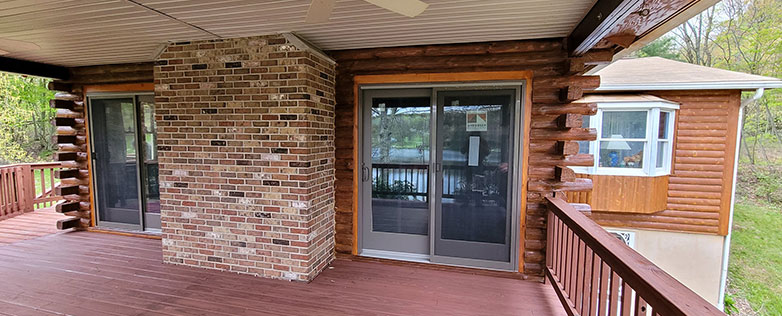
Signs You Need to Seal Your Log Home
Knowing how to seal a log home is one thing, but knowing when to seal it is important, too. Deciding whether you need to seal your log home now or if it can wait until next year can prove to be a difficult call to make. The first main sign you want to look for is if the logs are losing their sheen or turning gray. If this is happening, it’s a sign the wood is losing its crucial protection and needs maintenance. The other main thing to keep an eye out for is whether the current stain is starting to chip or peel. Once again, this is a sign that your home needs some work to look and perform like when it was new.
Learn more about the other most common log home repairs.
Start Sealing Your Log Home: Buy Here or Get Quotes
Proper maintenance is the key to keeping your log home as unique and amazing as the day you moved in. Whether you want to leave the work to us or you want to handle sealing a log home on your own, Gingrich Builders and Cabin Care can be a resource for you. Reach out now to talk to our team — or place your order online and get started!
Related Posts
